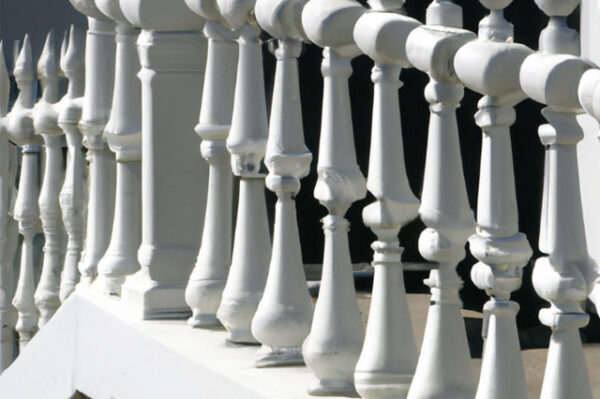Pool Fence Maintenance Tips for Long-Lasting Safety
Having a pool in your backyard is a luxury, but it also comes with significant responsibilities, especially when it comes to safety. One of the most crucial safety measures is having a well-maintained pool fence. Proper maintenance not only ensures the fence remains effective but also prolongs its lifespan. Here are comprehensive best pool fence ideas and maintenance tips to keep your backyard pool and area safe and secure.
Regular Inspections
Regular inspections are the first step in maintaining a pool fence. Check for any signs of wear and tear, rust, or damage best pool fence that could compromise its integrity.
Cleaning the Fence
Clean your back pool deck and fence regularly to prevent the buildup of dirt and debris. Use mild soap and water to wipe down the fence, ensuring it remains in good condition.
Lubricating Hinges
The hinges on your pool fence gate need regular lubrication to function smoothly. Use a silicone-based lubricant to keep them operating efficiently with low maintenance.
Checking for Rust
If your fence is made of metal, regularly check for rust. Treat any rusty spots on wood fencing with a rust remover and repaint the affected area to prevent further corrosion.
Tightening Loose Screws and Bolts
Over time, screws and bolts on your glass pool fences or fence can become loose. Regularly inspect glass pool fence and tighten any loose hardware to ensure the fence remains sturdy.
Repairing Broken Panels
If any panels on your pool fence are broken or damaged, repair them immediately. This prevents gaps that could compromise safety.
Maintaining the Latch
The latch is a critical component of your pool fence. Ensure it is working correctly and replace it if it becomes faulty.
Trimming Surrounding Vegetation
Vegetation growing near your pool fence can cause damage over time. Regularly trim any plants or trees that are close to the front hedge pool fence.
Applying a Protective Coating
Applying a protective coating to your pool fence can help protect it from the elements. This is especially important for wooden wrought iron fencing, and metal fences.
Checking the Height
Ensure your pool fence maintains the appropriate height for safety standards. Over time, soil erosion or settling can affect the your wood pool fence’s height.
Securing the Gate
The gate of your swimming pool or fence should close and latch securely. Regularly test the gate to ensure it operates correctly.
Preventing Climbable Objects
Remove any objects near the fence that children could use to move glass fence or climb over it. This includes furniture, toys, and landscaping features.
Testing for Stability
Periodically check the stability of your pool fence. Push and pull on various sections of glass and glass pool fencing to ensure it remains firmly in place.
Repainting the Fence
Repainting your pool fence not only keeps it looking good but also protects it from the elements. Use high-quality, weather-resistant paint.
Checking for Cracks
Inspect the fence for any cracks or splits, particularly in wooden fences. Address these issues promptly to prevent further damage.
Ensuring Compliance with Local Regulations
Ensure your pool fence complies with local safety regulations. These regulations can change, so stay informed about any updates.
Winterizing the Fence
If you live in an area with harsh winters, take steps to winterize your pool fence. This might include applying a protective sealant or covering parts of the fence.
Replacing Worn-Out Parts
Replace any worn-out parts of your pool fence promptly. This includes hinges, latches, and panels.
Professional Inspections
Consider having a professional inspect your pool fence periodically. They can identify issues you might miss and provide expert maintenance advice.
Keeping Records
Keep detailed records of all maintenance and repairs performed on your pool fence. This can help track its condition and plan for future maintenance needs.
Educating Family Members
Ensure that pool owners and all family members understand the importance of maintaining the pool fence and know how to perform basic checks and maintenance tasks for best pool fences.
Regular Inspections
Regular inspections are crucial for identifying potential problems early. Walk around the entire fence, checking for any signs of wear or damage. Look for loose or missing screws, bolts, and fasteners that might need tightening or replacement.
Cleaning the Fence
Keeping your pool fence clean helps prevent damage and keeps it looking new. Use a soft cloth or sponge with mild soap and water to clean the the metal pool fence. Avoid using harsh chemicals or abrasive cleaners that could damage the fence material.
Lubricating Hinges
Hinges can become stiff or squeaky over time, affecting the functionality of your pool gate. Apply a silicone-based lubricant to the hinges to keep them moving smoothly. Avoid using oil-based lubricants as they can attract dirt and grime.
Checking for Rust
Metal fences are prone to rust, which can weaken the structure. Regularly inspect metal fencing for rust spots and treat them immediately with a rust remover. After removing the rust, apply a rust-resistant primer and repaint the area to protect it from future corrosion.
Tightening Loose Screws and Bolts
Loose screws and bolts can compromise the stability of your pool fence. Use a screwdriver or wrench to tighten any loose hardware. Check both the fence panels and the gate for loose connections.
Repairing Broken Panels
Broken or damaged panels create a safety hazard. If you notice any broken glass panels anywhere, repair or replace them as soon as possible. For temporary fixes, use strong adhesive or temporary braces until you can make a permanent repair.
Maintaining the Latch
The latch is a critical safety feature of your pool fence. Test it regularly to ensure it closes and locks securely. If the latch is not working correctly, replace it immediately. Consider using a self-closing and self-latching gate for added security.
Trimming Surrounding Vegetation
Overgrown vegetation can damage your pool fence and provide a climbing aid for children. Regularly trim any plants, trees, or bushes near the pool fence requirements as to prevent these issues. Ensure there is a clear area around the fence to maintain its effectiveness.
Applying a Protective Coating
A protective coating can help extend the life of your pool fence by shielding it from the elements. For wooden fences, use a water-resistant sealant. For metal or glass fences, consider using a rust-resistant paint or powder coating.
Checking the Height
Pool fences must meet specific height requirements to be effective. Ensure your fence maintains the appropriate height, typically at least 4 feet, to prevent unauthorized access. If soil erosion or settling has affected the pool fencing options’ height, take corrective measures.
Securing the Gate
The gate is often the weakest point in a pool fence. Ensure it closes and latches securely each time it is used. Install a self-closing mechanism if your gate does not already have one. Regularly test the gate to ensure it is functioning correctly.
Preventing Climbable Objects
Objects placed near the pool fence can provide children with the means to climb over it. Keep furniture, toys, and other items away from the fence. This includes large decorative rocks, planters palm trees, and even tree branches that could be used as climbing aids over pool fencing.
Testing for Stability
A stable fence is a safe fence. Periodically check the stability by gently pushing and pulling on various sections. If the fence moves or feels unstable, identify the cause and fix it promptly. This may involve tightening screws, reinforcing posts, or replacing damaged sections.
Repainting the Fence
Repainting your pool fence not only enhances its appearance but also provides protection against the elements. Choose high-quality, weather-resistant paint that is suitable for your type of fence and material. Follow the manufacturer’s instructions for application and drying times.
Checking for Cracks
Cracks in your fence can compromise its integrity and effectiveness. Inspect the fence regularly for any cracks or splits, especially in wooden fences. Repair small cracks with wood filler or epoxy. For larger cracks, consider replacing the affected section.
Ensuring Compliance with Local Regulations
Pool fence regulations vary by location. Stay informed about the local pool safety regulations and ensure your best pool fence complies with them. This might include specific height requirements, material restrictions, and gate functionality standards.
Winterizing the Fence
Winter weather can be harsh on wood pool fences too. Take steps to winterize your pool fence ideas even if you live in a cold climate. Apply a protective sealant to wooden fences to prevent moisture damage. For metal fences, ensure all rust spots are treated and covered before winter.
Replacing Worn-Out Parts
Worn-out parts can weaken the overall structure of your pool fence. Regularly check for worn or damaged components and replace them as needed. This includes hinges, latches, panels, and any other parts that show signs of wear.
Professional Inspections
Consider having a professional inspect your pool fence periodically. Professionals can identify issues that you might overlook and provide expert advice on maintenance and repairs. Schedule inspections at least once a year for peace of mind.
Keeping Records
Maintaining detailed records of all maintenance and repairs can help you track the condition of your pool fence. Record the date of inspections, any repairs made, and parts replaced. This information can be valuable for future maintenance planning.
Educating Family Members
Everyone in the household should understand the importance of pool fence maintenance. Teach family members how to perform basic checks and encourage them to report any issues they notice. This collective effort can help ensure the fence remains in good condition.
Proper pool fence maintenance is essential for ensuring the safety and longevity of your fence. By following these tips, you can keep your pool area secure and extend the life of your fence. Regular inspections, cleaning, and prompt repairs are key to maintaining an effective barrier around your pool. Stay vigilant and proactive in your maintenance efforts to enjoy a safe and beautiful pool area for years to come.


